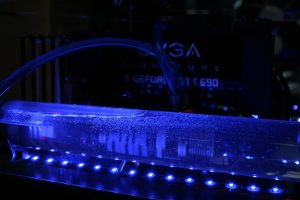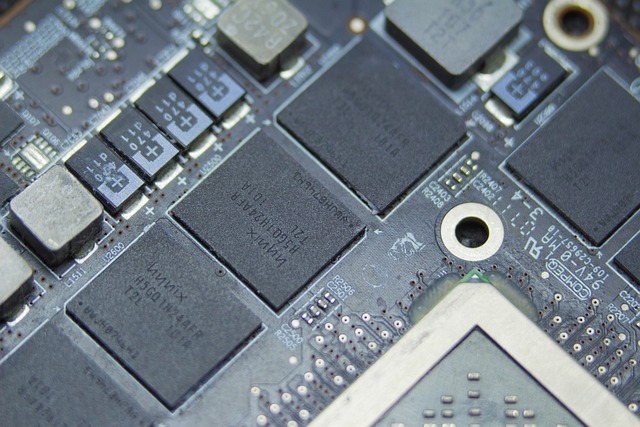Before you jump into the world of overclocking, let’s ensure you do it safely, preventing any major crashes or meltdowns. This guide will walk you through the process, demystify the jargon, and have you pushing the boundaries of your hardware like a seasoned pro.
The Basics
What is Overclocking Anyway?
At its core, overclocking is like tuning up your car’s engine, but for your PC. It’s all about making your components run faster than the manufacturer’s recommended settings. By doing so, you can extract better performance and an overall smoother experience. However, it’s crucial to remember that tinkering with factory settings carries risks.
The Benefits and Risks
Before we dive headfirst into the overclocking pool, let’s weigh the pros and cons. On the upside, you’ll experience a significant boost in performance across applications, including gaming, video editing, and more. However, you’re also flirting with the risk of overheating, stability issues, and voiding warranties. It’s a bit like walking on a tightrope – thrilling but risky!
The Step-by-Step Guide to Overclocking Your PC Components Safely
Know Your Hardware Inside Out
Before you unleash the beast, make friends with it first! Familiarize yourself with your PC’s components – the CPU, GPU, RAM, and motherboard. Understand their capabilities, limitations, and optimal operating conditions. This knowledge will serve as your compass on the overclocking journey.
Keep an Eye on Temperatures
Overclocking produces more heat, and excessive heat is the enemy of hardware. Grab a reliable temperature monitoring software to keep tabs on your component’s temperatures. Always aim to keep them within safe limits to avoid frying your precious hardware. Remember, it’s all about balance!
Incremental Steps are the Way to Go
Jumping from zero to hero is tempting, but it’s a recipe for disaster. Overclocking should be done incrementally, step by step. Tweak the settings slightly, test for stability, and repeat. Patience is the name of the game here. Slow and steady wins the race!
Stress Testing
Stress testing is the ultimate litmus test for your overclocked setup. It pushes your components to the brink, revealing any instability lurking beneath. Embrace stress testing, and don’t shy away from making further adjustments based on the results. Remember, trial and error is part of the process.
Cooling Solutions
When it comes to overclocking, cooler is always better. Invest in top-notch cooling solutions to keep your hardware chill even under heavy load. Air coolers, liquid coolers, thermal pastes – choose wisely and ensure your rig stays frosty.
Backup, Backup, Backup!
One golden rule of overclocking – always back up your data. It’s like wearing a seatbelt while driving at high speeds; it might not prevent an accident, but it softens the impact. Just in case something goes awry during the process, your important files and memories remain safe.
The Balance between Performance and Longevity
Every PC enthusiast seeks maximum performance, but not at the cost of the hardware’s lifespan. Finding the sweet spot between pushing the limits and maintaining longevity is an art. Be mindful of the risks, and don’t push your components beyond what they can handle.
Common Mistakes to Avoid
Impatience Can Cost You
Overclocking is not a race to the finish line. Rushing through the process without carefully testing each step can lead to instability and potential hardware failure. Take your time, perform regular stress tests, and don’t skip any crucial steps.
Neglecting the Power Supply
Your power supply unit (PSU) is the heart of your system. Neglecting its importance during the overclocking process can have disastrous consequences. Ensure your PSU can handle the increased power demands of your overclocked components to prevent unexpected shutdowns or worse.
Overlooking BIOS Updates
Your motherboard’s BIOS plays a crucial role in overclocking. Manufacturers often release BIOS updates to improve stability and performance. Keep your BIOS up to date to optimize your system’s potential and ensure compatibility with the latest hardware.
Blindly Copying Someone Else’s Settings
Each system is unique, and what works for one might not work for another. Avoid blindly copying overclocking settings from forums or videos without understanding your own hardware and needs. Learn the principles behind the settings and tweak them based on your specific configuration.
Myths and Misconceptions
Overclocking Voids Your Warranty
While it’s true that some manufacturers have strict policies regarding overclocking and warranty, not all do. Many CPUs and GPUs come with unlocked multipliers, explicitly designed for overclocking. Always check your warranty terms and consult the manufacturer before assuming overclocking voids it.
Water Cooling is the Only Way

Water cooling might seem like the holy grail of cooling solutions, but it’s not the only option. Air coolers have come a long way and can handle moderate overclocks with ease. Choose a cooling solution that suits your needs and budget.
Overclocking Always Means More FPS
Overclocking can indeed boost gaming performance, but it’s not a guarantee for a substantial increase in frames per second (FPS). Certain games are more CPU-dependent, while others rely heavily on the GPU. Understand the requirements of the applications you use to make informed decisions.
The Final Verdict
In conclusion, overclocking your PC components can be an exhilarating experience, elevating your system’s performance to new heights. Armed with the knowledge from this comprehensive guide, you’re now equipped to tackle the process like a pro.
Remember, safety and patience should be your guiding principles. Start with small adjustments, perform regular stress tests, and closely monitor temperatures. Embrace the art of balance between performance and longevity to ensure your hardware remains reliable and long-lasting.



